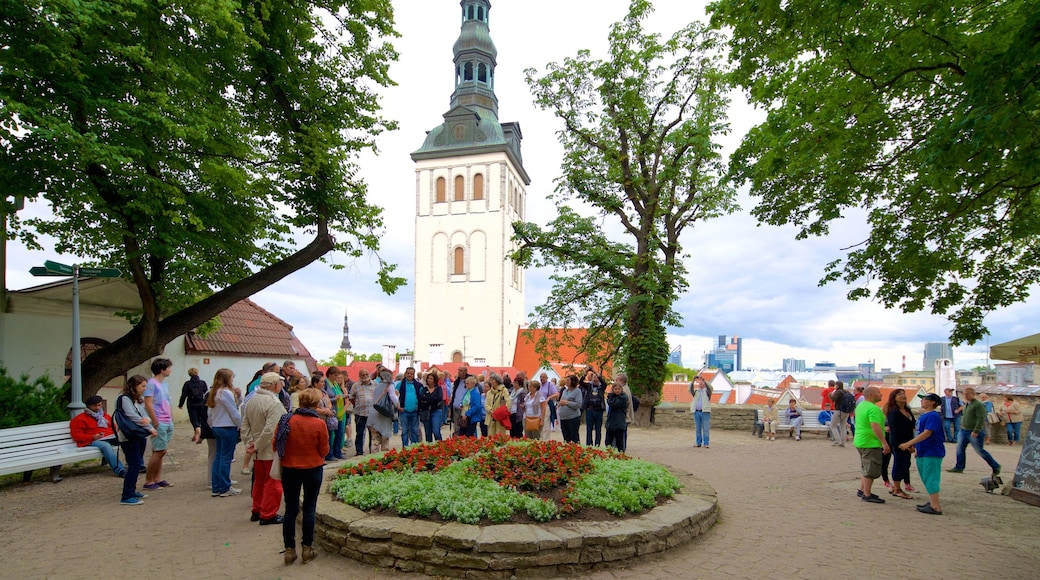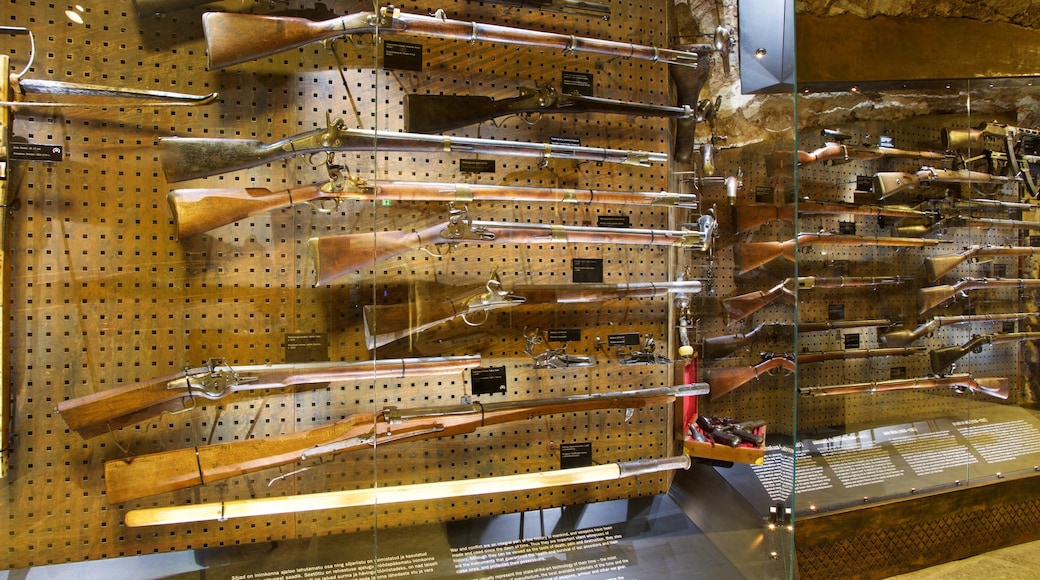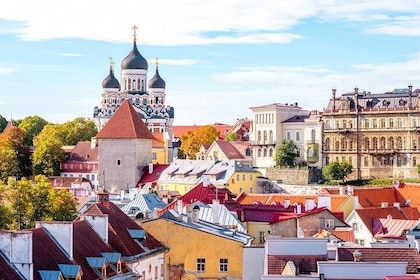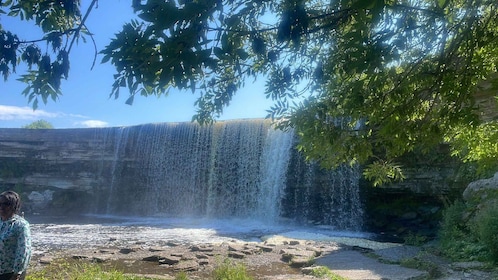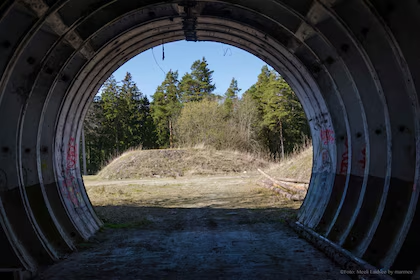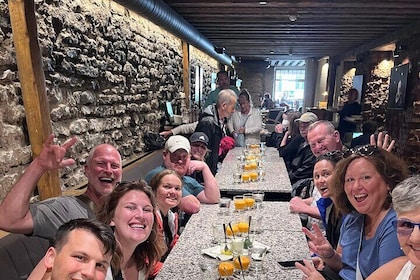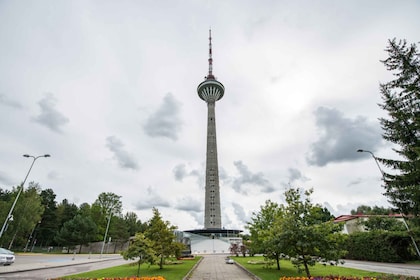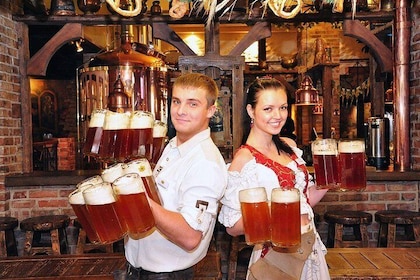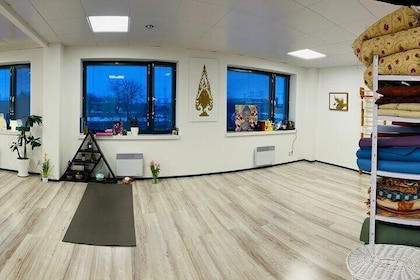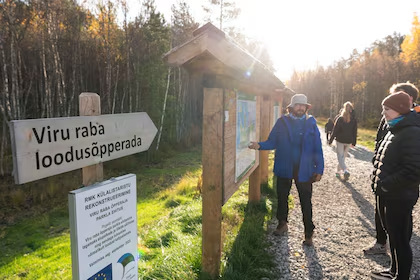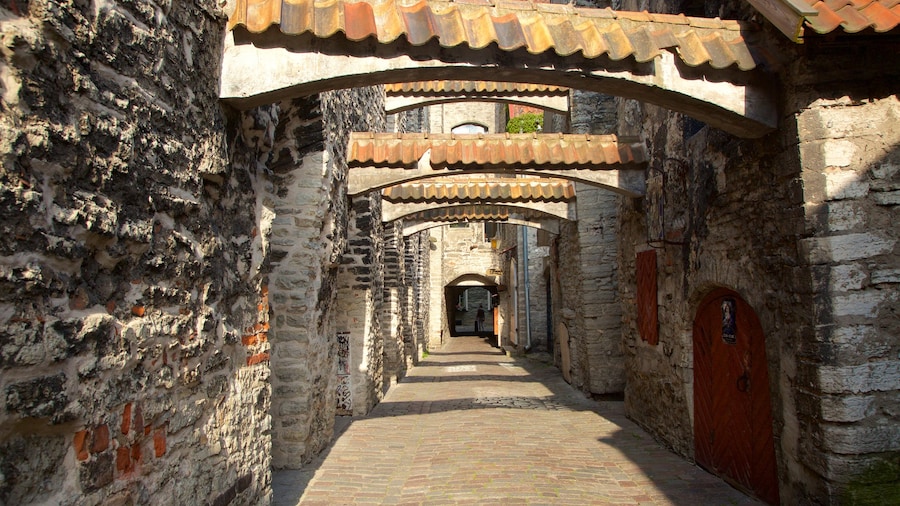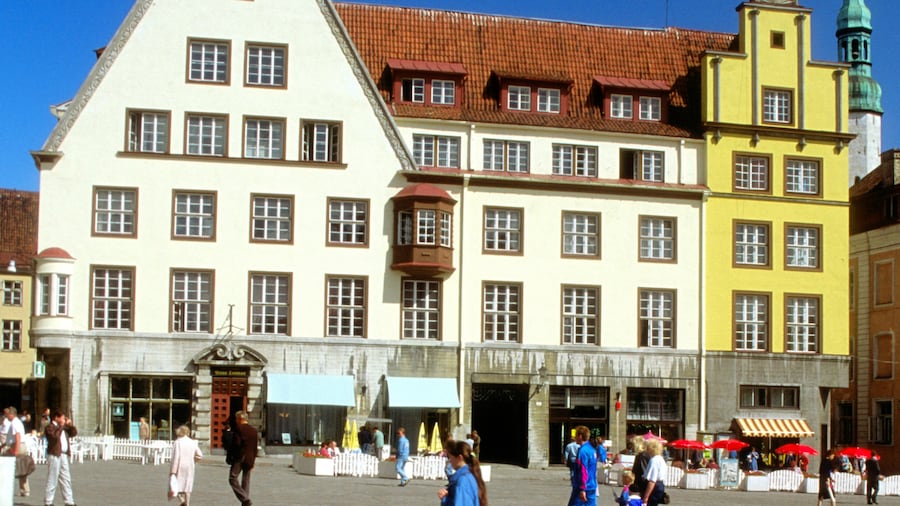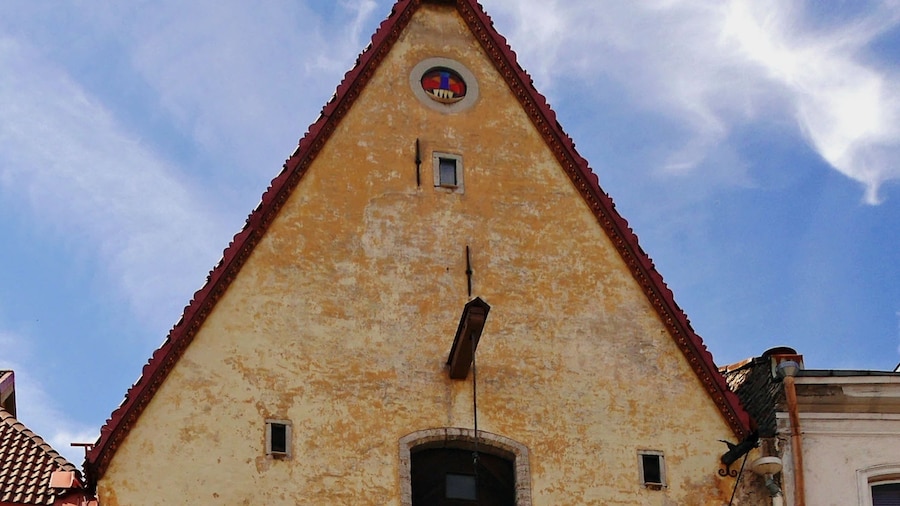The Estonian History Museum covers 11,000 years of the country’s past across its many exhibits in the medieval Great Guild Hall. The building itself is a spectacular sight, with its Gothic features and yellow façade. Make your way through the various displays for a greater understanding of the many facets of Estonian history.
Admire the arched windows and prominent portal with lion heads for doorknobs on the Great Guild Hall, which is a fine example of medieval Estonian architecture. Dating back to the early 1400s, the building was used as a guild for artisans and merchants until the 1920s. Enjoy a meal at a restaurant in the quaint cobbled plaza in front of the museum.
Learn about the impact of 20th-century socialist movements on general society. Use the audio guide, which comes in English, for a deeper understanding of the political and societal nuances in Estonia. Consider a guided tour with one of the museum’s docents for a more personal touch. Hear how the museum started life as a personal collection by town hall pharmacist Johann Burchard in 1802.
Examine the intriguing objects on display in the Spirit of Survival exhibit for an intriguing overview of Estonia, from prehistoric times to modern day. Explore the fascinating relics of the Weapons Chamber, play with interactive displays and watch films about the nation’s complex military history.
Inspect coins of former currencies and see how money has changed over the years. Browse gifts with a historical theme in the souvenir shop.
Purchase a ticket, with discounts for children and those with student cards. The museum opens daily from morning until early evening. Note that it is closed on Wednesdays in winter.
The main section of the Estonian History Museum is in the Great Guild Hall in central Tallinn. Visit nearby landmarks, such as Holy Spirit Church, the Museum of Medieval Torture Instruments and Tallinn Town Hall. The rest of this history museum is based in the Maarjamäe Palace and its stables in the northeastern part of the city.
